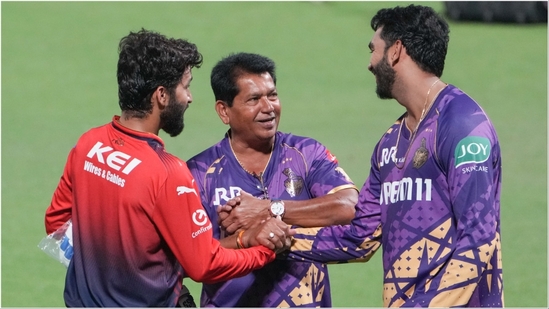The salivating prospect of 300-plus, return of reverse-swing: What to expect from IPL 2025 as KKR vs RCB kick things off
CRICKET


Would it be unrealistic to expect that SRH, or indeed any of the other nine franchises, will surge past 300 this time around?
Fifteen runs an over even in these days of horrendous over-rates translates to around 1200 runs in a day of Test cricket (with 80 overs as the bare minimum). Or 750 runs in a One-Day International innings. Neither is truly in the realms of the possible. But 300 in 20 overs? Very much on the cards, given how adept at smacking the cover off the ball batters have become, how the size of the boundary (already quite miniscule) makes no difference, and how bowling craft and skill and expertise have become sideshows to the unfettered exhibition of power and audacity that batters across the globe have imbibed with practiced ease.
And yet, for the first time in a long while, a concerted effort has been made to ensure that bowlers aren’t mere props or glorified bowling machines whose lot is to run in, deliver the ball and sprain their necks in trying to follow the path of the orbital ball that sails far and wide. In a significant move, the IPL – which prides itself in setting trends and compelling the rest of the cricket world to follow suit – has reverted to the use of saliva, in vogue for a century and a half before the Covid-19 pandemic came acalling, and augmented it with the option of a second ball after ten innings in a night game to offset the debilitating effect of the dew, thereby contributing to a level-playing field that the bowling fraternity was convinced had passed it by.
The reintroduction of the saliva to keep the shine on the ball and facilitate reverse swing – how much Mohammed Shami’s plaintive cry during the Champions Trophy has had an effect is open to debate – could have far-reaching consequences. The IPL’s Impact Player rule, which has singularly been detrimental to the growth of the genuine all-rounder in India, has found few takers worldwide, but it is more than likely that the saliva redux will appeal more to the larger cricketing ecosystem. Especially in Test cricket, the ban on the use of saliva to keep one side of the ball shinier and heavier than the other has reduced the efficacy of crack pacers operating with an ageing ball. The pandemic a distant memory now, it won’t be a huge surprise if the global authorities take a leaf out of the IPL book and go back to type, to an era where shining one side of the ball with saliva was the norm, however unhygienic it might have appeared, so that the reverse-swingers could have their say.
